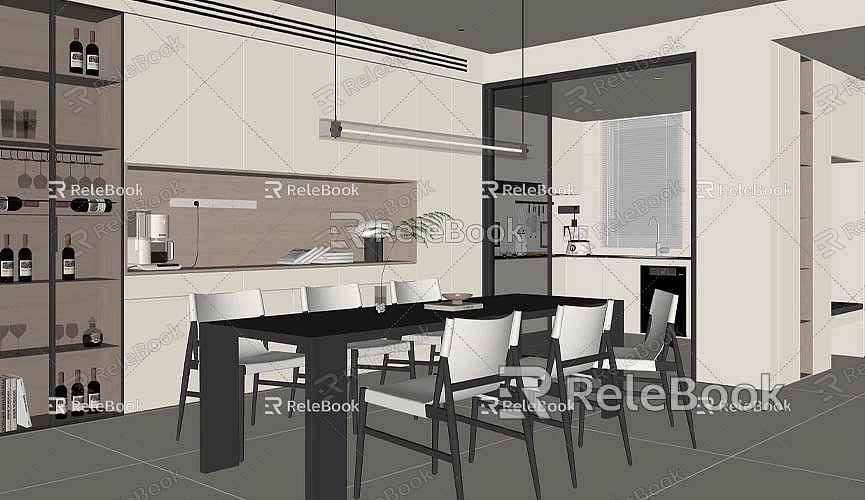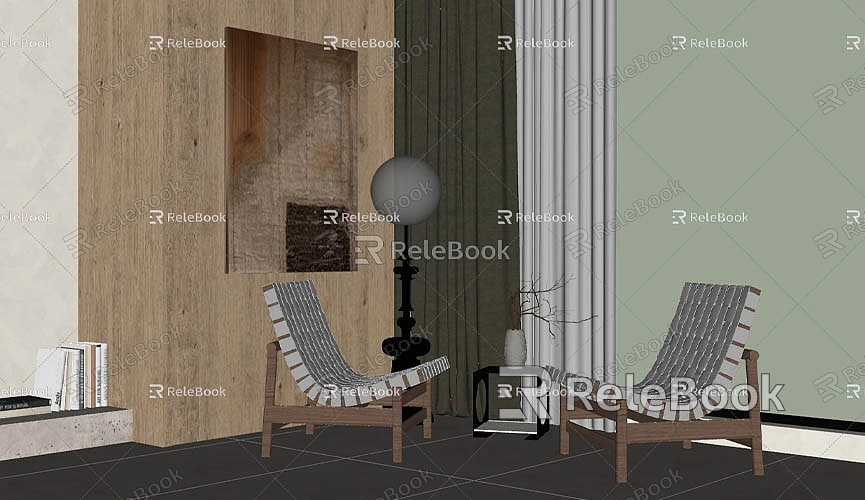How to import sketchup model into unreal engine
In the fields of modern architecture, virtual reality (VR), and game development, both SketchUp and Unreal Engine (UE) are widely used for creating and presenting 3D models. SketchUp, as a lightweight 3D modeling tool, has become the go-to choice for architects, designers, and engineers due to its easy-to-learn interface and rich plugin ecosystem. On the other hand, Unreal Engine, a powerful game engine, stands out for its efficient real-time rendering capabilities and VR support, making it the ideal platform for designers and developers seeking high-quality visual effects.
Importing a SketchUp model into Unreal Engine is an essential skill for many designers and developers working on architectural visualization, interactive design, or virtual exhibitions. This workflow allows users not only to turn static architectural designs into interactive virtual environments but also to take full advantage of Unreal Engine’s powerful tools for high-quality rendering and real-time effects. In this article, we’ll dive into the process of importing SketchUp models into Unreal Engine, helping you achieve this task successfully and create stunning effects in virtual space.

Understanding the Workflow Between SketchUp and Unreal Engine
Before starting the import process, it is important to understand the workflow and file formats used by SketchUp and Unreal Engine. SketchUp is known for its intuitive modeling approach and user-friendly interface, but its native file format (.skp) is not directly compatible with Unreal Engine. Therefore, understanding how to convert SketchUp files into a format that Unreal Engine can read is the key to a successful import process.
Unreal Engine supports several file formats, with the most commonly used being FBX and DAE (Collada) formats. These formats are efficient at transferring geometry data, materials, textures, and other important information. Knowing how to export SketchUp models to these formats and import them into Unreal Engine is a skill every user must master.
Preparing the SketchUp Model: Cleaning and Optimization
Before importing the model, it's important to clean and optimize your SketchUp file. Even though SketchUp’s interface is simple, models that contain redundant geometry, unnecessary groups or layers, or unneeded components can complicate the import process and cause performance issues. To ensure a smooth import, follow these steps to prepare your model:
1. Remove Unnecessary Components and Geometry
SketchUp models often contain unused components or objects. These extras can increase the file size and cause unnecessary issues during the import into Unreal Engine. Clean these elements up to ensure a simpler, cleaner model.
2. Check Model Hierarchy and Grouping
Proper grouping and hierarchy are important, especially for larger projects. By grouping different architectural parts and furniture, you’ll find it easier to edit these components after importing, and it improves the overall maintainability of the project.
3. Apply Proper UV Mapping
For models requiring precise texturing, proper UV mapping is crucial to ensure textures display correctly. Make sure each part of the model has appropriate UV mapping applied so materials and textures will align accurately when imported into Unreal Engine.
4. Check Scale and Units
SketchUp's units may differ from Unreal Engine’s default units (centimeters), so it’s important to confirm the scale of the model before exporting. If the scale is incorrect, the model might appear too large or too small in Unreal Engine.
Exporting the Model: Choosing the Right File Format

Once the SketchUp model is ready, the next step is exporting it. While SketchUp offers several export formats, FBX and DAE are the recommended options because they retain the most detail and information.
1. Export as Collada (.dae) Format
Collada is one of SketchUp's built-in export options, and it supports the export of basic geometry. This format is compatible with Unreal Engine, making it a reliable choice for transferring models.
In SketchUp, go to File > Export > 3D Model, and select Collada (.dae) as the export format. Make sure to choose the correct units and scale to avoid size issues in the exported model.
2. Export Using FBX Format (Recommended)
Although SketchUp doesn’t natively support FBX export, you can achieve this by installing a third-party plugin, such as the SketchUp to FBX plugin. The FBX format is more efficient than Collada for supporting animations, textures, and complex materials, so it’s generally the preferred format.
After installing and enabling the FBX plugin, go to File > Export > 3D Model, and choose the FBX (.fbx) format. When exporting, make sure to configure the appropriate settings for materials, texture paths, and units.
Importing the Model into Unreal Engine
Once the SketchUp model is exported in FBX or Collada format, the next step is importing it into Unreal Engine. This process is relatively straightforward, but attention to certain settings and details is necessary to ensure the model displays correctly.
Start by opening Unreal Engine and creating a new project or opening an existing one. In the Content Browser, right-click and select Import, then choose the exported FBX or DAE file. Unreal Engine will open an import settings window where you can configure various import options.
- Import Meshes: Ensure the “Import Mesh” option is checked so that the geometry is imported into Unreal Engine.
- Import Materials: If materials and textures were applied in SketchUp, check “Import Materials” and “Import Textures” to automatically bring these into Unreal Engine.
- Import Animations: If the SketchUp model contains animations or actions, you can enable the “Import Animations” option.
- Normals and Tangents: To ensure proper lighting effects on the model's surfaces, make sure to import normals and tangents.
Once the settings are configured, click Import, and Unreal Engine will bring in the SketchUp model, converting it into a 3D asset ready for use in a virtual environment.
Adjusting and Optimizing the Model
After importing the model into Unreal Engine, some adjustments may be necessary. Since the materials and textures applied in SketchUp may not perfectly match Unreal Engine’s system, they may require reconfiguration. Additionally, ensure the model is optimized for performance, especially when importing large or complex models.
Material and Texture Adjustments
Materials applied in SketchUp tend to be quite basic, so users may need to adjust the texture coordinates, material properties, or even create more complex materials for use in Unreal Engine. Unreal Engine's powerful material editor allows you to create more realistic and detailed visuals.
Adjusting Model Scale and Positioning
If the model has scaling issues or is incorrectly positioned in the scene, use Unreal Engine’s editing tools to make adjustments. Ensure the model’s scale matches that of other objects in the scene and reposition it as needed.
Optimizing and Enhancing Visual Effects
Once the model is successfully imported, you can further enhance the scene using Unreal Engine's advanced capabilities. For example, you can employ lighting and global illumination techniques to improve the scene’s realism, or use post-processing effects to enhance visual quality. Additionally, Unreal Engine’s VR support allows you to turn your SketchUp model into an immersive virtual experience.
Importing a SketchUp model into Unreal Engine is an essential skill for architectural visualization and virtual environment design. By choosing the correct export format, adjusting settings, and performing post-import optimization, users can transform static SketchUp designs into dynamic, interactive virtual environments, taking full advantage of Unreal Engine’s powerful features and high-quality rendering.
If you need high-quality 3D textures and HDRIs for your models and virtual scenes, you can download them for free from [Relebook Textures](https://textures.relebook.com/). If you're looking for beautiful 3D models, you can download them from [Relebook Models](https://3dmodels.relebook.com/), where Relebook offers a wide range of premium 3D resources to help you improve the quality of your projects.
By mastering these techniques, you’ll be able to present stunning architecture and scenes in Unreal Engine, boosting your productivity and expanding your creative possibilities.

